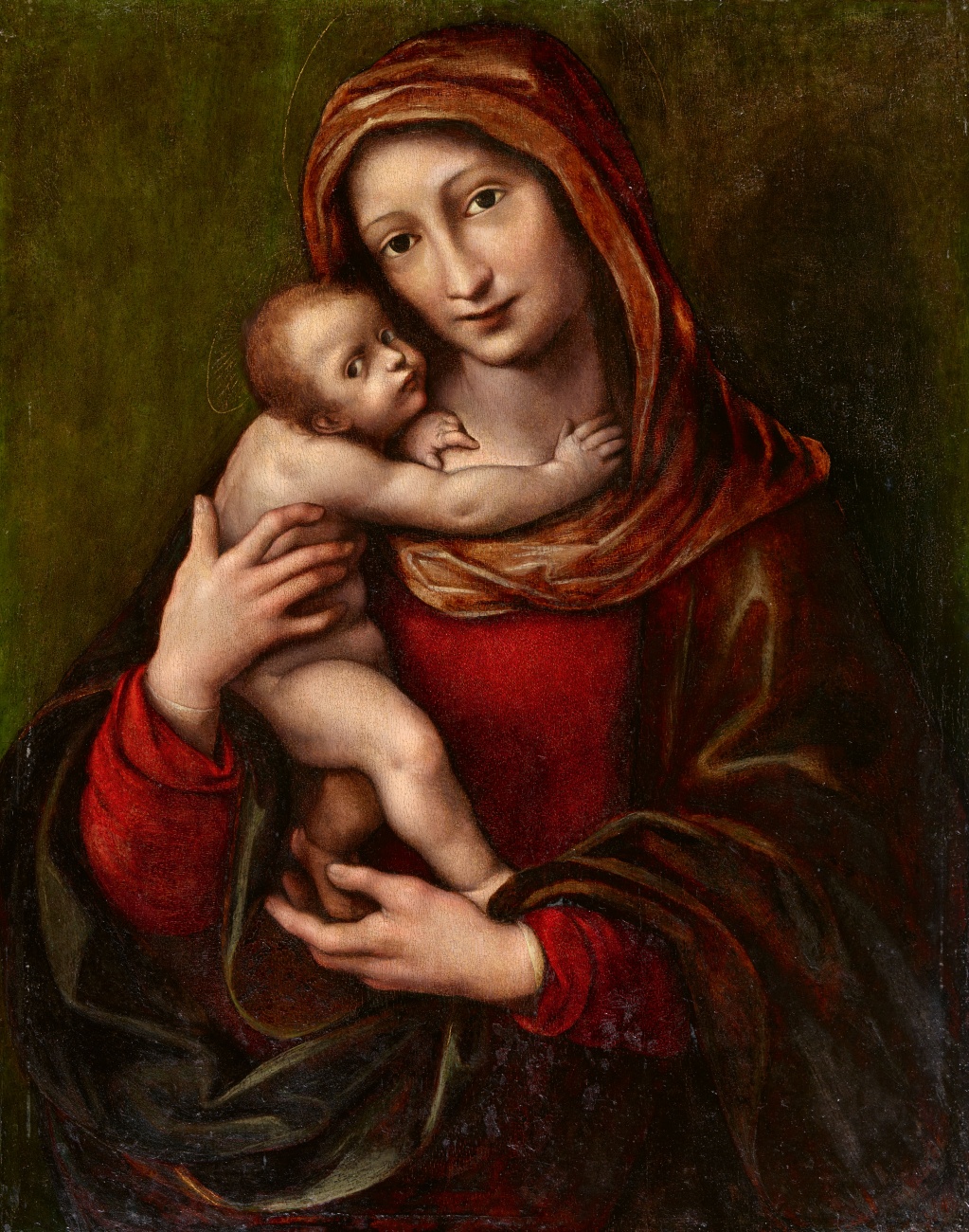Giovanni Pietro Rizzoli, called Giampietrino
The Virgin and Child
Oil on panel. 64 x 50.5 cm.
The present painting recently appeared on the Spanish art market with a tentative attribution to Giampietrino. After an initial cleaning and restoration, Dr Geddo confirmed this attribution without reserve. The panel is recorded in the photo-archive of Bernard Berenson, to whom it was shown in 1954 by Ms Ethel Le Vane, later his lover, advisor to the Getty Museum and one of the first women ever to be active as an art dealer.
On the reverse of his photo, Berenson noted the names of Bernardino Luini and Giampietrino, but the American art historian did not publish the work in his Giampietrino inventory of 1969. It is likely that the panel's extensive restorations prevented Berenson from declaring its authenticity.
The Madonna Le Vane was at some point sent to Spain, where it remained until 2016. Following restoration, the work's composition and style could be unquestionably connected to the Lombard Master´s oeuvre by Dr Geddo, who noted the distinctive elegance of the silhouettes, the delicate rendering of the female figure, her magnetic smile, and her captivating gaze toward the observer. Other revealing elements of Giampietrino´s hand are the cold colour palette of the flesh tones modelled by the grey chiaroscuro, the "sfumato", and foremost the posture of the Virgin´s hand. Even the triangular shape of the composition, derived from Leonardo, is characteristic of this painter.
The Madonna with Child by Andrea Solario in the Budapest Szépmüvészeti Múseum (circa 1505-15010) can be considered the direct model of Madonna Le Vane: both pieces show the motif of embracing figures with their heads leaning against one another. Another direct reference is Leonardo´s drawing Putto on a window bench, already used by Giampietrino in the Madonna and Child in the Lambert Collection in New York. Compared to the latter piece, the present work is characterised by a more maternal and intimate atmosphere.
The elongated proportions, the lively hands and the engaging smile link the Madonna Le Vane to other works by Giampetrino, such as the Nativity with Two Angels in the Museo Civico, Lugano, and the Polyptich in Bagatti Valsecchi, Milan. The group is characterised by an elegant manner and at the same time shows the painter's interest in the "maniera moderna". Therefore, it can be ascribed to Giampietrino's later output of so-called "Leonardesque mannerism", peculiar to the 1530s.
We thank Dr Cristina Geddo for help and advice.

